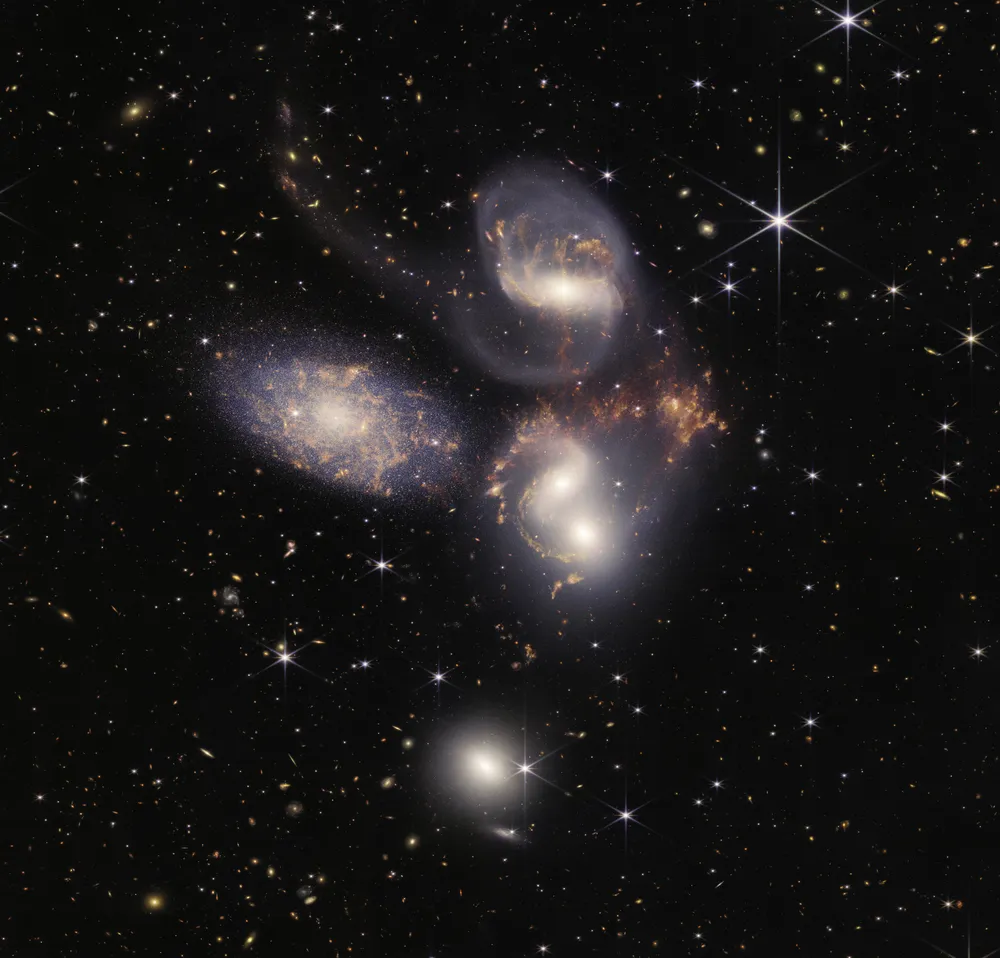In the early morning of July 12, members of the campus community gathered to witness astronomical history.
The first images taken by the James Webb Space Telescope — the biggest and most powerful space telescope to date — were unveiled in a NASA livestream this morning. Thanks to Webb, we are now able to see into the deepest parts of the universe with a sharpness and detail that will revolutionize astronomy.
Well worth the wait
Astronomers and space enthusiasts have been anxiously awaiting the unveiling of this telescope for over two decades. Following years of budgeting crises, technical challenges and an onslaught of launch delays, the excitement surrounding Webb has come alongside a healthy dose of humor and cynicism.
Over the course of her academic career, astronomy PhD student Raelyn Sullivan recalled how “there was this nebulous James Webb Telescope.”
“We often would joke about ‘will it ever actually happen?,'” she said, recalling banter centring on colleagues optimistically planning to include Webb data in their projects, only for their starry-eyed aspirations to be crushed by yet another launch delay.
"That’s what makes this really exciting also, the thing that we’ve been waiting for, for what feels like forever, has finally actually happened," said Sullivan.
At the viewing party, physics and astronomy postdoctoral fellow Lukas Hergt pointed to a xkcd comic which poked fun at the seemingly never-ending launch delays. “[The delays] were a running joke,” he said.
For physics and astronomy graduate student Adam Dong, this momentous occasion comes after fears of the project falling through.
“I think there was serious doubt, in my mind, whether this would actually happen,” he said, referring to a history of threats of the US government cutting funding. Webb is the most expensive telescope ever built at a whopping $10 billion.
Cosmic community
Professor of astronomy and astrophysics Dr. Douglas Scott sent out an email advertising the viewing party on Tuesday night, welcoming community members to come and witness the historic moment together.
“This is the biggest astronomy project ever, the most expensive certainly and there is significant Canadian involvement,” he said to The Ubyssey after the viewing party. “It’s a special event, so I think it was worth opening it up to whoever wants to show up.”
Webb is an international venture from NASA, the Canadian Space Agency and the European Space Agency. Canada supported the telescope’s development by providing two critical pieces of equipment: the fine guidance sensor and the near-infrared imager and slitless spectrograph. The fine guidance sensor helps guide the telescope so that it can “lock” on to stars precisely, while the near-infrared imager and slitless spectrograph takes in infrared light from cosmic entities to allow scientists to infer all sorts of information — from the composition of a planet’s atmosphere to how nearby objects interact.
Thanks to these contributions, Canadian institutions will be guaranteed approximately five per cent of the telescope’s observing time. Professor of astronomy and astrophysics Dr. Harvey Richer is among the researchers who are awaiting data, with his team's images currently scheduled to be taken in August, he wrote in an emailed statement to The Ubyssey. His research group will be exploring whether there is evidence of planet formation 12 billion years ago in the "very early universe."
"This is of great interest as it could herald a potential early rise to life in the universe," wrote Richer in an email.
According to Scott, who sat on the Time Allocation Committee for Webb, astronomy buffs can look forward to new studies very soon. He said the data shared on July 12 are to be released in science quality form “right away.”
“There will be papers tomorrow, I guarantee,” he said.
Star tech: The next generation
From decorated researchers to bright-eyed-and-bushy-tailed undergraduate students, space fanatics from all levels of academia gathered together to witness this moment as a community.
For third-year physics student Myles Osenton, Webb is a “game-changer.” His passion for astronomy drove him to switch his major from chemistry to physics and work in the UBC Astrochem lab with Dr. Ilsa Cooke. As Osenton hopes to pursue a career in astrochemistry, Webb will influence the data that he will one day have access to in his chosen field.
But students who don’t necessarily want to pursue research related to Webb’s data can still appreciate its impact, like third-year math and physics student Morgan Arnold.
“Even if it’s not necessarily where you work or where you intend to work as a field, it’s still just such a stunning discovery,” he said. “I think anyone who can appreciate physics in any capacity has to just stand back and marvel.”
The data collected from the James Webb Space Telescope will allow researchers to explore new questions about the inception of the universe while also invigorating a new generation to look to the stars.
“I think we all grew up on Hubble images and this is our generation’s Hubble,” said physics PhD student Daniel Korchinski. “When I was a kid, I loved astronomy, it’s why I went into physics … and this is stuff that will [inspire] the next generation.”
Share this article
First online






